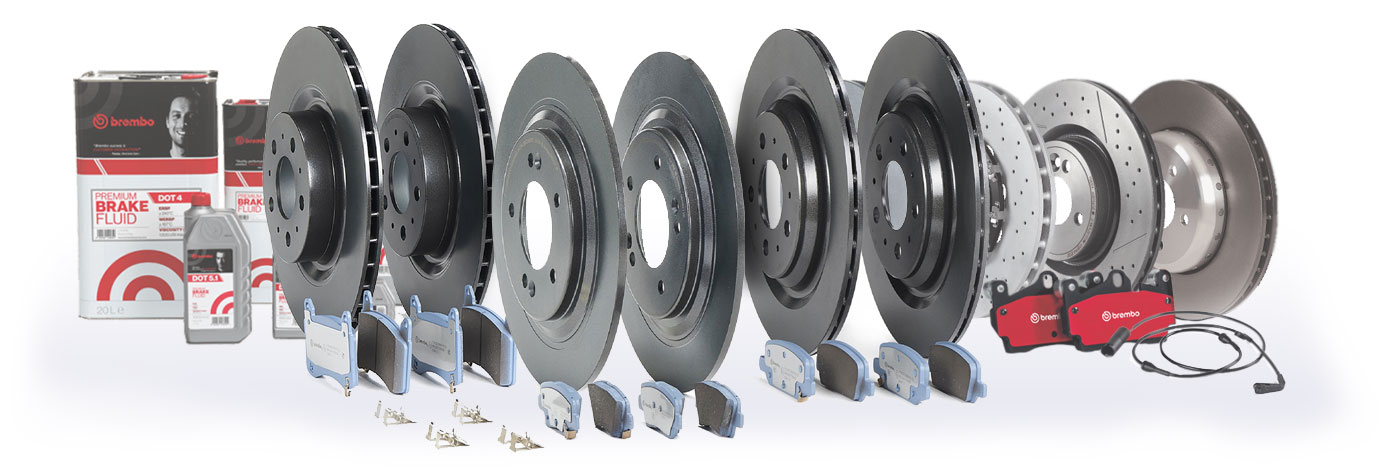|
Brembo is the first brake manufacturer to offer a brake pad and rotor solution specific to the unique needs of electric cars. Brembo's Beyond EV Rotor & Brake Pad kits include Brembo Beyond EV Brake Pads, which have a dedicated friction material and galvanized backing plate, specifically designed to meet the unique needs of electric vehicles, while reducing dust and improving braking comfort. The Beyond EV Brake Pads are paired with specialized rotors featuring a new anti-corrosion treatment on the braking surface. Together these components are quieter and resistant to oxidation, offering greater durability and a brilliant shine for a more attractive braking system. The end result is brakes that excel at offering efficient performance and protection from rust even in the toughest conditions. The Brembo Beyond EV Rotor & Brake Pad Kits are available for many popular EVs from Tesla, BMW, Kia and more. RockAuto also carries the complete line of Brembo aftermarket Brake Pads, Rotors (including their unique, UV coated rotors), Brake Pad Wear Sensors, and Brake Fluid to meet the stopping needs of non-EV vehicles as well. Find Brembo parts and more in the "Brake & Wheel Hub" category of the RockAuto.com catalog. | |
|
We regularly issue batches of new magnets in limited quantities so more customers get a chance to have their cars in the magnet limelight. We hope all customers have fun receiving the magnets with their orders and expanding their collection! 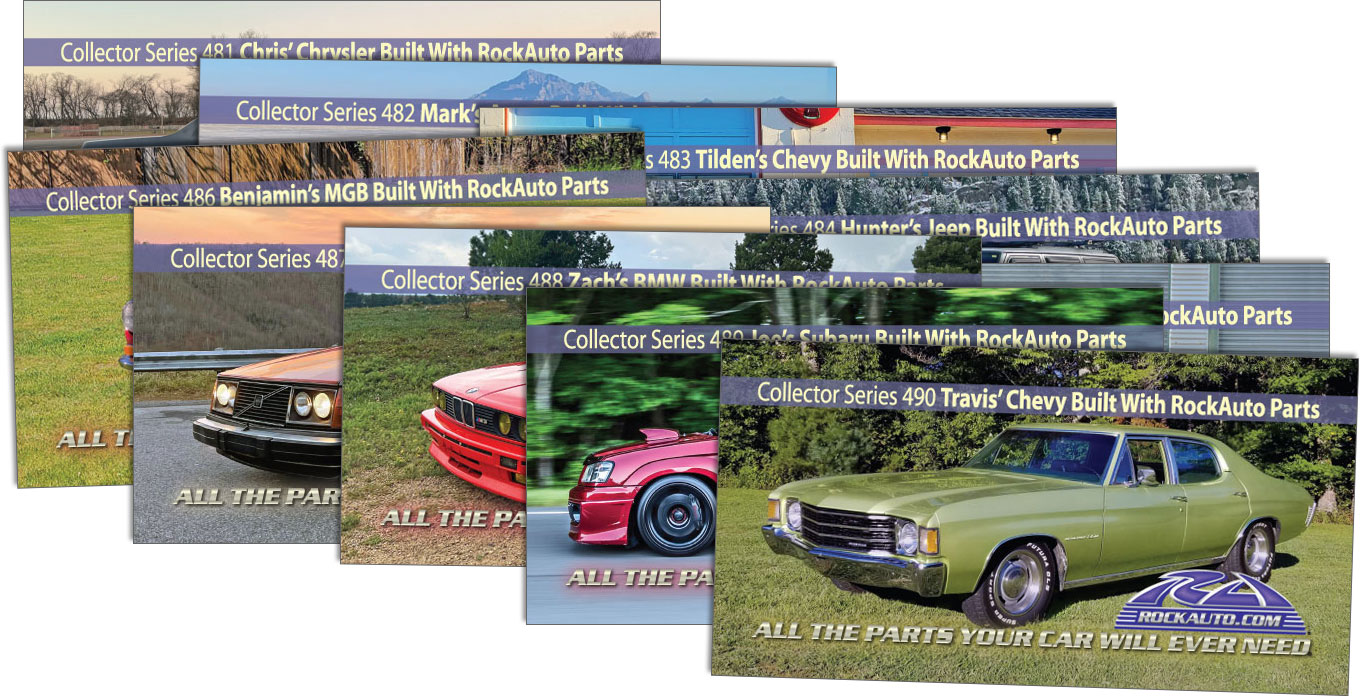 Expect to see magnets from this new batch in your orders soon! |
|

| |
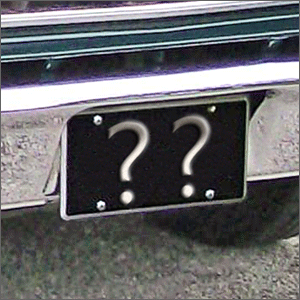 | |
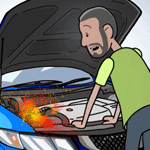 I am a seasoned technician and have worked most of my career as an engine machinist and builder. In 2004, my 1.8 liter 1990 Mazda Protege with over 250K on it had a burned valve. I managed to make time to fix it, so I pulled the head, intake and exhaust manifold as one complete unit. I disassembled it and took it to the machine shop where I worked and completely rebuilt the cylinder head. The reassembly of the cylinder head and installation back on the engine was smooth and easy! With an upcoming holiday I was thrilled to have quickly completed the task. Once ready, I started the engine and it sounded like a diesel! Upon further diagnosis, I realized that oil was not getting to the hydraulic DOHC lifters/followers/cups. In my haste, I had put the cylinder head gasket on upside down and thus blocked the oil feed passages to the top of the engine! Luckily, nothing was damaged. On Thanksgiving night, I went out to the garage, pulled the head back off and re-installed the gasket, and put it all back together in about three hours. All was well after that. I should have known better. My advice is do not rush and pay attention to the details. It may be difficult to find enough time to do it right the first time ... but there is always enough time to do it a second time. Phil in Pennsylvania |
|
 Push on the brake pedal, and the pistons in the brake master cylinder convert pedal movement to hydraulic pressure that activates the brake calipers and/or brake drums. Prior to the 1967 model year, brake master cylinders typically use a single piston to pressurize all four brakes. A brake fluid leak anywhere in the system can mean there is not enough hydraulic pressure to activate any of the brakes. From 1967 onward, brakes were divided into two systems or circuits. If one circuit springs a leak or otherwise fails then the second circuit can still stop the vehicle. The front brakes are separate from the rear brakes. Alternatively, the right front brake is coupled with the left rear brake and the left front brake is coupled with the right rear brake. The metal body of the master cylinder looks longer because it has a second piston inside. 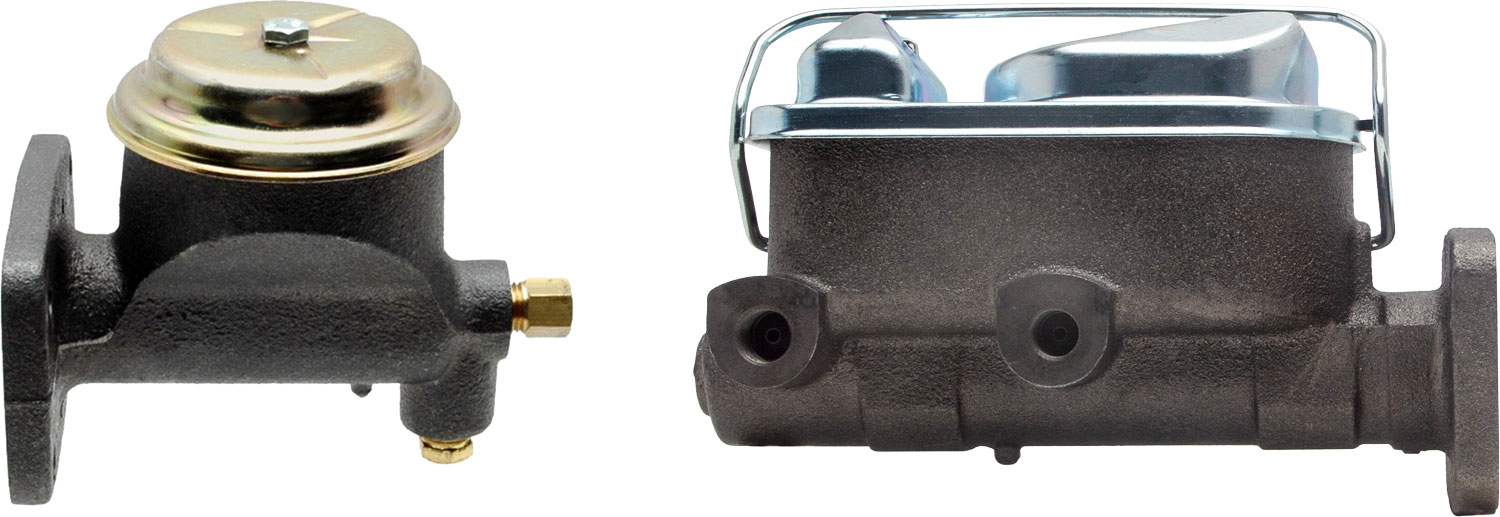 Single & Dual Piston Master Cylinders Attached to the master cylinder may be two distinct brake fluid reservoirs for the two circuits. Two reservoirs cast in metal or two plastic reservoirs with separate caps may sit on top of the master cylinder. Newer vehicles are more likely to have a single plastic brake fluid reservoir with a single cap. This does not mean we have gone back to pre-1967 style single-circuit brake systems. A newer, single reservoir stores fluid for both brake circuits. Two outlets leading into the master cylinder are often visible at the bottom of the reservoir. The shape of the reservoir, internal partitions or other clever design methods ensure that even a “single reservoir” will provide adequate brake fluid to the good brake circuit even if the other circuit springs a leak. 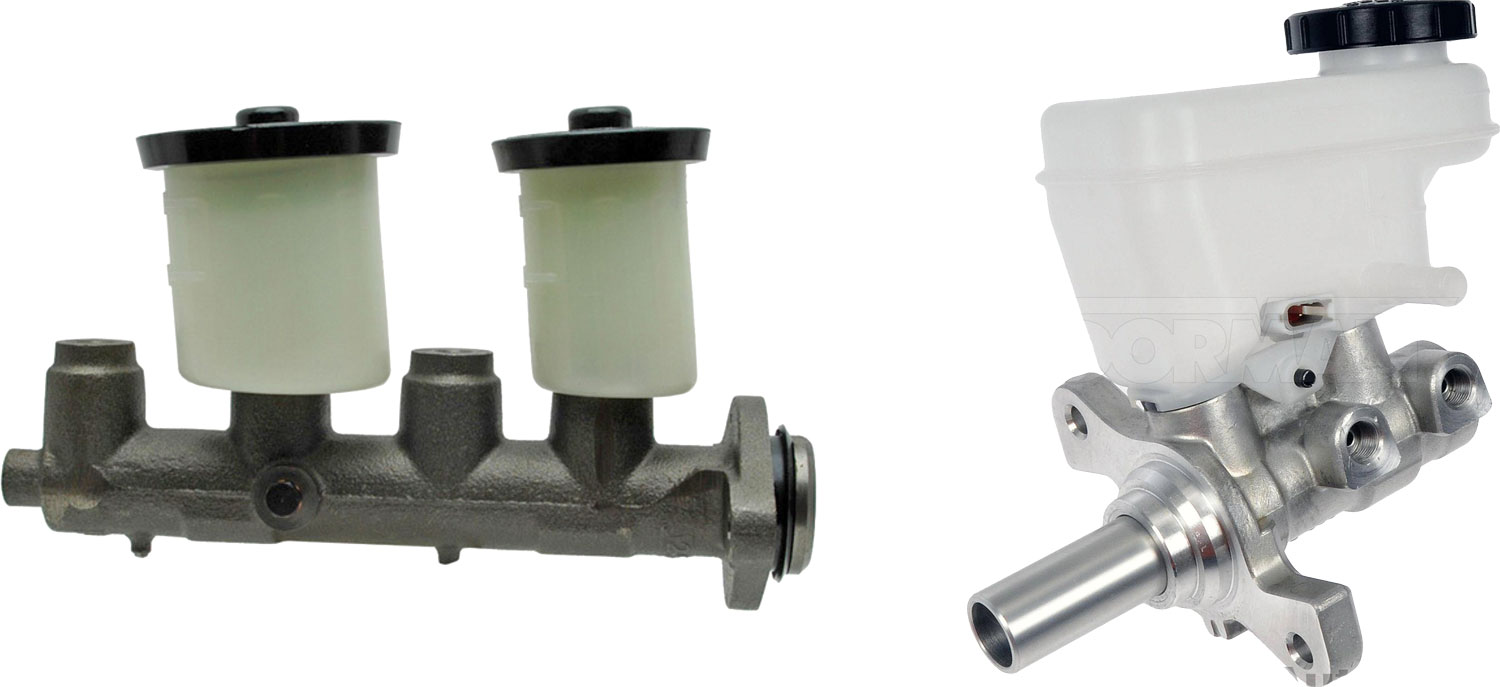 Master Cylinders with Plastic Reservoirs At first glance, the newer plastic brake reservoirs might also seem like a step backwards because they do not have the big flexible diaphragms that sit under the metal lids of older, two-circuit master cylinders. The diaphragms are pushed up and sucked down as brake fluid is forced into and out of the reservoir. This helps keep moisture laden air or dust from contacting and contaminating the fluid. A close look under the caps of newer brake fluid reservoirs will reveal floating plastic baffles or films that perform the same functions as those older style diaphragms. Pre-1967 brake master cylinders may have one port for the system’s only circuit, and post-1967 master cylinders may have two ports for transferring brake fluid to and from the system’s two circuits. However, counting the ports/brake lines coming out of the master cylinder can be a misleading way to count the number of brake circuits. On older master cylinders there may be additional ports for the valves (proportioning, metering, combination of those two) that balance fluid pressure so the two brake circuits activate simultaneously and do not lock-up/skid separately. On newer vehicles, brake fluid proportioning and metering is handled by an anti-lock brake system (ABS) which may need its own ports on the master cylinder. Pressure sensors also add fittings/ports to some master cylinders. Look under “Brake & Wheel Hub” in the RockAuto.com catalog to see the brake master cylinder for your specific vehicle. Photos and specifications in the catalog will provide crucial assistance in identifying the correct replacement master cylinder and/or reservoir (inlet/outlet ports, mounting holes…). Tom Taylor, To read more of Tom's articles, click this link and choose from story titles on the Newsletter Archives page. |
|
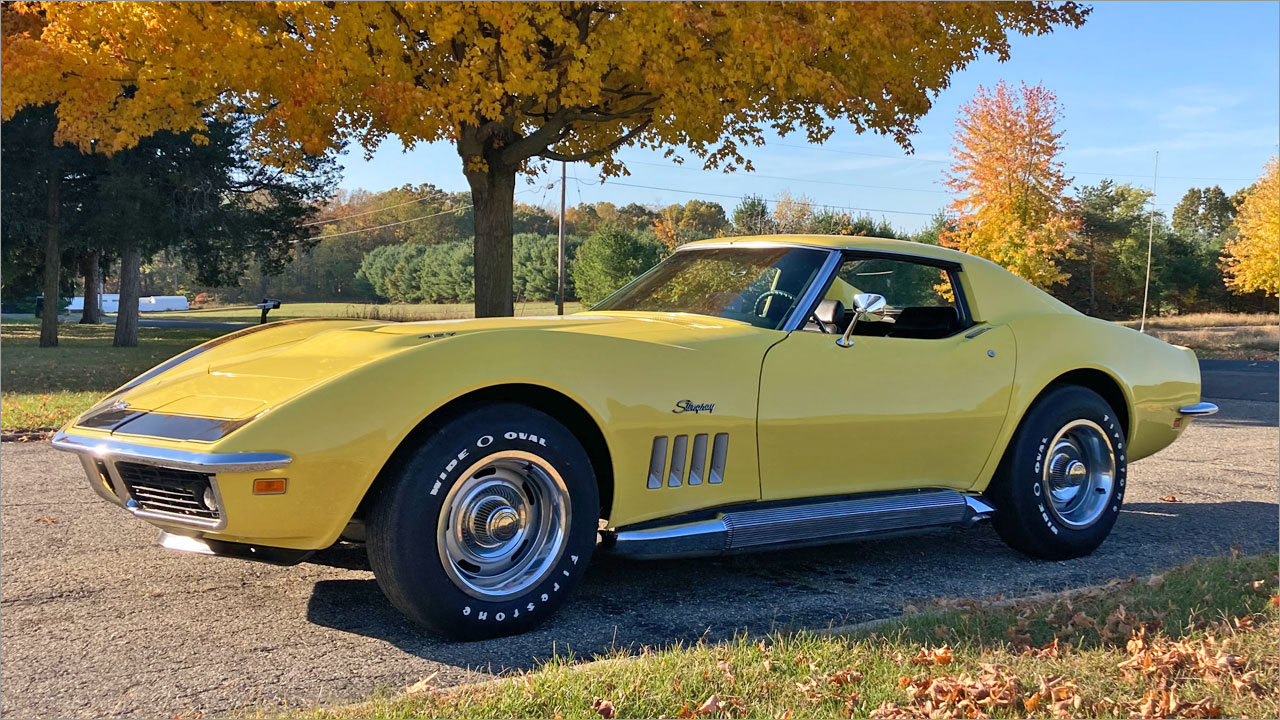 |
|
This is my 1969 Chevrolet Corvette that was restored with countless parts from RockAuto - more than I could possibly list. All the engine parts, transmission, suspension, the list goes on and on. It’s truly “Built with RockAuto parts." The Corvette slumbered in a barn from 1982 until I found it in 2019. It was a complete basket case, just a shell of a car and a pile of parts. It’s painted in the original Daytona yellow and still retains the factory 427 engine. I finished the restoration in 2023, and after four years of grueling labor, it was on the road once again. Thanks RockAuto! |
Share Your Hard Work & Stories | |
|
Your Hard Work Do you purchase parts from RockAuto? If so, RockAuto would like to give you the opportunity to have your car or truck possibly featured in one (or occasionally more) of our publications such as the monthly newsletter, collector magnets or other commercial use. New, old, import, domestic, daily driver, trailer queen, classic, antique, we want to see them all! For submission instructions and tips for taking pictures of your car, please visit our Photography Tips & Submission Info page. Your Most Infamous Auto Repair Blunder Use your woe to help others avoid similar mistakes. Please email your story to marketing@rockauto.com. Include your mailing address and if you would like a RockAuto Hat if we publish your story. See the Hats under Tools & Universal Parts in the RockAuto catalog. The story will be credited using only your first name and your vague geographic location (state, province, country, continent, etc.) so you can remain semi-anonymous! | |



